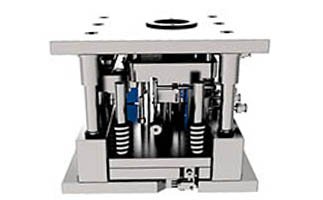Precautions for the heating process of injection molds
Date: October 11, 2024

In order to make the manufacturing process of injection molds reflect exquisite workpieces, we will heat treat the injection molds, which can not only improve the precision height of the injection molds, but also improve the quality and precision height of the workpieces. This time, Taineng Te Injection Mold Factory will share with you the precautions for the heating process of injection molds, which are mainly divided into four stages: forging process, preliminary heat treatment, quenching and tempering, and stress relief annealing. Below are the points to note for each step.
1、 Forging process. This is an important link in the manufacturing process of injection mold working parts. For injection molds of high alloy tool steel, technical requirements are usually proposed for the distribution of carbides and other metallographic structures of the material. In addition, the forging temperature range should be strictly controlled, the correct heating specifications should be formulated, the correct forging force method should be adopted, and slow cooling or timely annealing after forging should be carried out.
2、 Preparation heat treatment. According to the different materials and requirements of the working parts of the injection mold, pre heat treatment processes such as annealing, normalizing, or quenching and tempering should be adopted to improve the structure, eliminate the structural defects of the forged blank, and improve the processing processability. High carbon alloy mold steel can eliminate network like secondary carbides or chain like carbides through appropriate pre heat treatment, resulting in carbide spheroidization and refinement, and promoting uniform distribution of carbides. This is beneficial for ensuring the quality of quenching and tempering, and improving the service life of the mold.
3、 Quenching and tempering. This is a crucial step in the heat treatment of molds. If overheating occurs during quenching heating, it will not only cause significant brittleness of the workpiece, but also easily cause deformation and cracking during cooling, seriously affecting the life of the mold. Special attention should be paid to preventing oxidation and decarburization during die quenching heating. The heat treatment process specifications should be strictly controlled, and vacuum heat treatment can be used if conditions permit. After quenching, it should be tempered in a timely manner and different tempering processes should be adopted according to technical requirements.

4、 Stress relief annealing. After processing parts with injection molds, stress relief annealing treatment should be carried out to eliminate the internal stress caused by rough machining, in order to prevent excessive deformation and cracks caused by quenching. For molds with high precision requirements, stress relief tempering treatment is also required after grinding or electrical machining, which is beneficial for stabilizing mold accuracy and improving service life.
Heating treatment is a process that every injection mold must go through before leaving the factory, but not every injection mold factory can execute it in a standardized manner. This also requires attention to process technology. Mold factories have established a new standard for mold heating in the industry, making every set of molds produced reach a high degree of precision.

